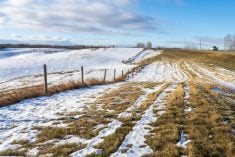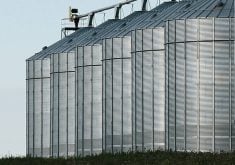A consulting firm says a soybean crush plant is feasible in Manitoba, but a switch plant that handles soybeans and canola is probably the best option for the province.
Manitoba and Saskatchewan produce 20 percent of Canada’s soybeans, but there is no soybean crush plant in Western Canada.
In a report released mid-May, Mercantile Venture Consulting said there are sufficient soybeans and enough demand from livestock producers, particularly Manitoba’s hog industry, to support a switch plant.
“For soybean producers, a local crush plant would … likely generate freight savings and better soybean prices to growers,” the report said.
Read Also

Federal budget draws mixed reaction from Canadian agriculture groups
The 2025 federal budget took a step forward in recognizing agriculture’s importance but failed to address pressing challenges like labour disruptions, interswitching and precision technology, say Canadian farm groups.
“Livestock producers would equally benefit by gaining a local protein feed supply at competitive prices.”
However, Mercantile Venture Consulting said a dedicated soybean crush plant may not be realistic, because the plant has to be large enough to capture economies of scale.
“For a single use plant, a minimum capacity of 2,000 tonnes, or 695,000 tonnes annually, would be needed,” Mercantile said.
“Based on 2014 production numbers, a 2,000 tonne per day plant in Manitoba needs to attract … 37 to 55 percent of total current soybean production (in Manitoba and Saskatchewan). The size of the soybean meal market in Western Canada would need to be further developed.”
Mercantile said the plant could process soybeans until supplies became hard to source, and then switch to canola for the remainder of the crop year.
Claude Vielfaure, executive vice-president of Hylife, which owns pig barns in Manitoba and operates a hog processing plant in Neepawa, said soy meal is usually the second ingredient in hog rations, after corn or another cereal.
“It’s probably 20 percent of the ration,” he said.
The study was funded by the Manitoba Pulse & Soybean Growers Association and Soy 20/20, a consortium of government, universities and companies that has a mandate to develop Canada’s soy industry.
Kyle Friesen, chair of the growers association, said a soy crushing plant would provide a local market for beans, and Manitoba growers would be less reliant on exports.
“We want to encourage local supply and demand to keep value-added processing in Manitoba to support jobs, the tax base and economic activity,” he said.
The provincial government estimated in a news release that the overall economic benefits of a soybean crushing plant would be $190 million a year, based on facility construction and job creation.
Mercantile Venture Consulting didn’t specify a location for a possible crushing plant, but did say there is a “sweet spot,” likely in south-central Manitoba, where most soybeans are grown.
The location should also be close to feed mills in Winnipeg and a reasonable distance from southeastern Manitoba, where the province’s hog barns are concentrated.
The growers’ association and Soy 20/20 said they plan to investigate “potential stakeholders” who may want to build a soybean crushing plant in Manitoba.
Manitoba and Saskatchewan seeded soybean acres (thousands):
2008 2010 2012 2014
Man. 280 520 800 1,270
Sask N/A N/A N/A 270
Source: Statistics Canada
Contact robert.arnason@producer.com















